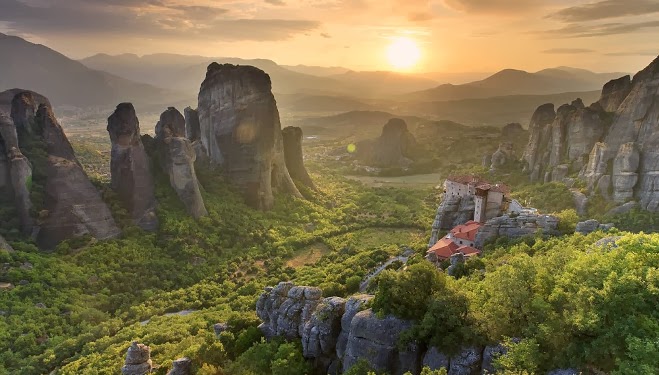 |
| Spinalonga |
The island of Spinalonga, officially known as Kalydon, is located in the Gulf of Elounda in north-eastern Crete, next to the town of Elounda. Originally, Spinalonga was not an island, it was part of the island of
Crete. During Venetian occupation the island was carved out of the coast
for defense purposes and a fort was built there. During Venetian rule, salt was harvested from salt pans around the island.
 |
| The island of Spinalonga |
But the reason that makes this island so unique is that it has been used as a leper colony from 1903 to 1957. It is notable for being one of the last active leper colonies in Europe. The last inhabitant, a priest, left the island in 1962. There were two entrances to Spinalonga, one being the lepers' entrance, a tunnel known as "Dante's
Gate". This was so named because the patients did not know what was
going to happen to them once they arrived. However, once on the island
they received food, water, medical attention and social security
payments.
 |
| Dante's Gate |
 |
| Bottles of medicines used in Spinalonga |
Today, the uninhabited island is a popular tourist attraction in Crete.
In addition to the abandoned leper colony and the fortress, Spinalonga
is known for its small pebble beaches and shallow waters. The island can
easily be accessed from Elounda and Agios Nikolaos. Tourist boats depart from both towns on a daily basis. There is no accommodation on Spinalonga, meaning all tours last only a few hours.
 |
| The uninhabited island of Spianlonga |
Spinalonga featured in the British television series "Who Pays the Ferryman?" and Werner Herzog's experimental short film "Last Words". It is also the setting for the 2005 novel "The Island" by Victoria Hislop, the story of a family's ties to the leper colony. The book was adapted for television by Mega Channel Greece.
 |
| Scene of Mega Channel's production |
 |
| The castle of Spinalonga |
Panoramic:














































.jpg)


